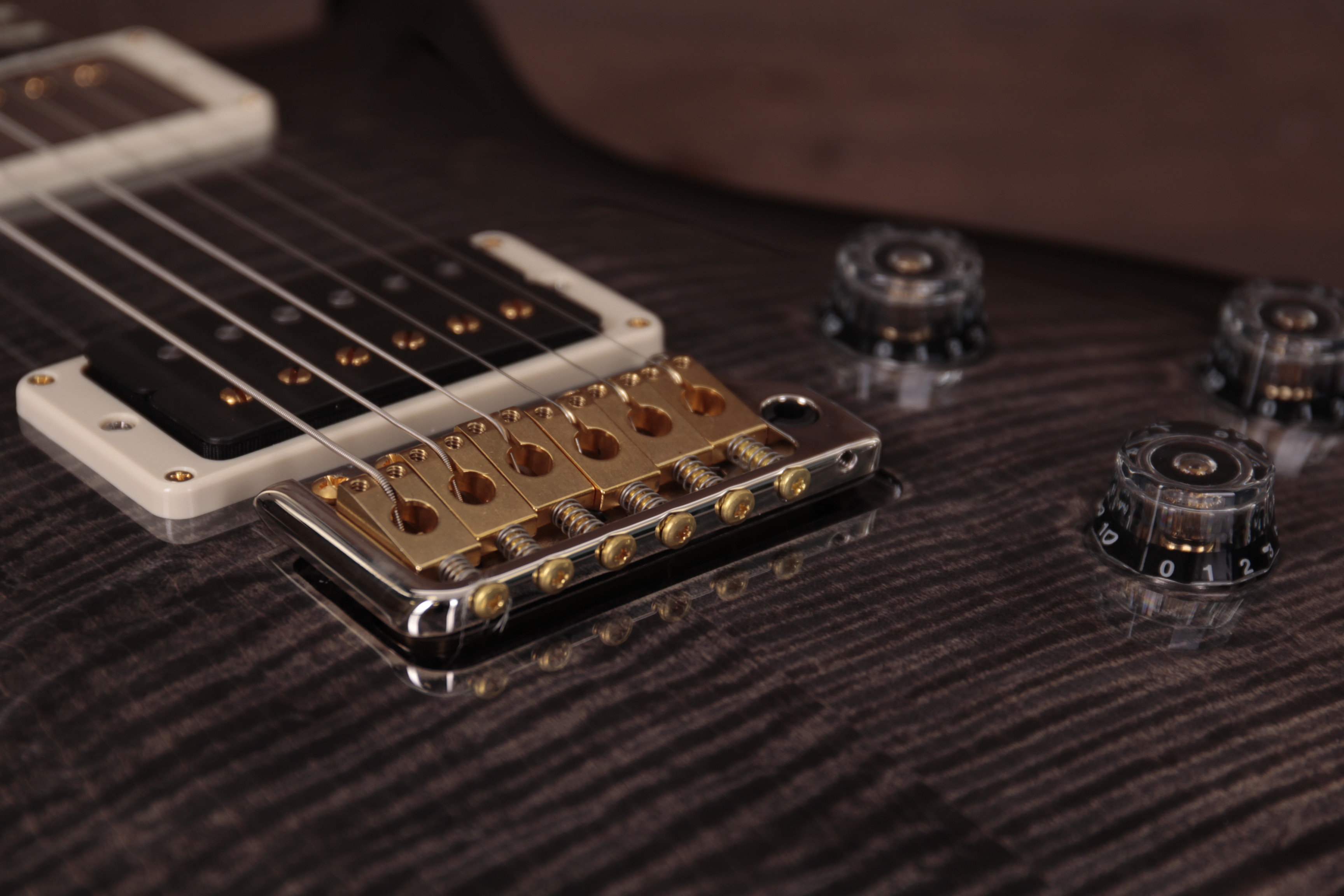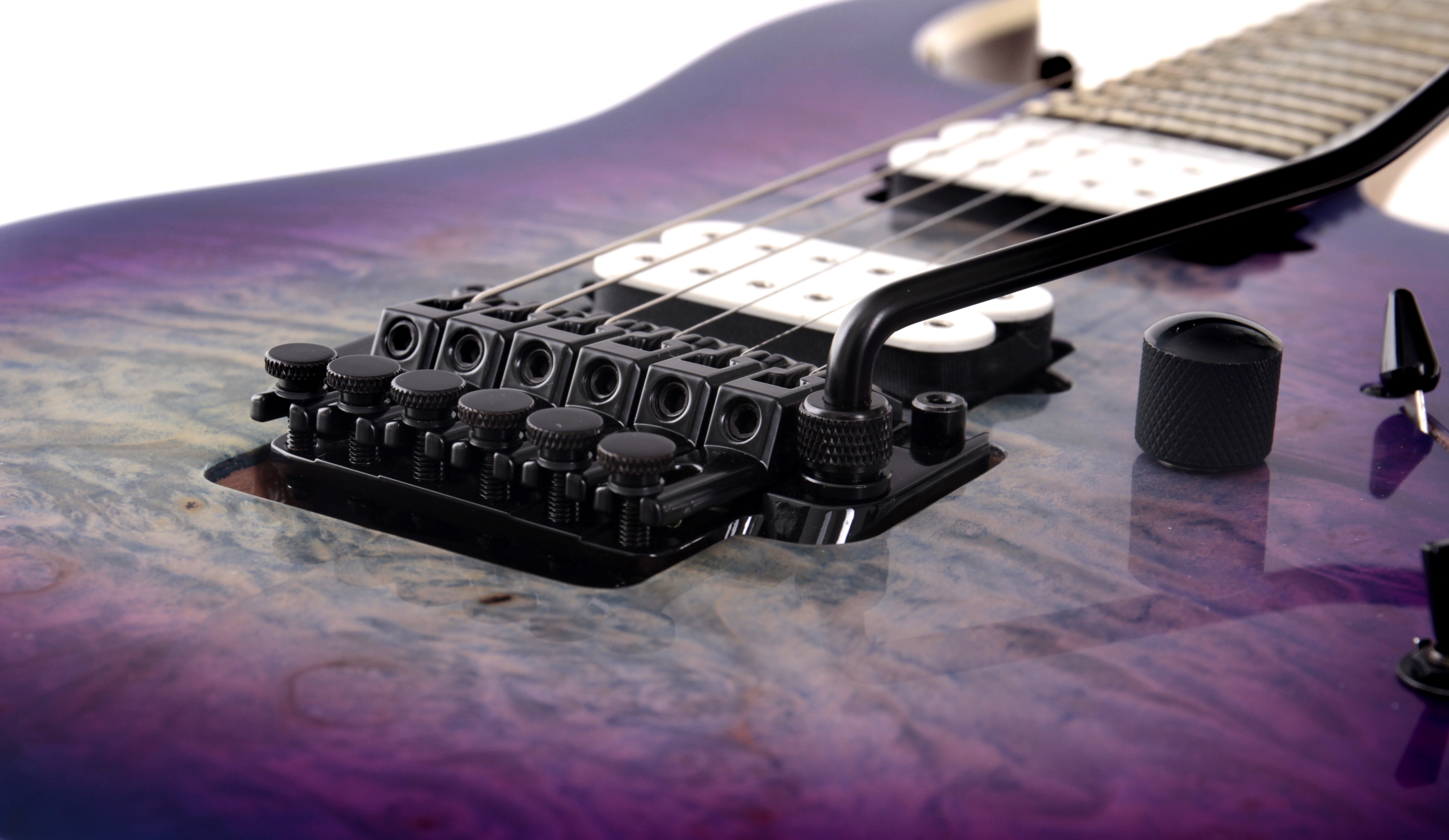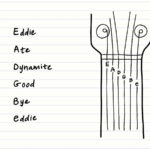The Guitar Floating Bridge, a fascinating piece of engineering, has been transforming guitar sounds since its early days in the 1920s with archtop guitars. The introduction of the Bigsby vibrato system marked the first commercially successful venture into vibrato, but it was Fender’s Stratocaster in the mid-1950s that truly revolutionized bridge design. Fender’s synchronized tremolo bridge, often mistakenly called a vibrato (tremolo is actually a volume modulation, while vibrato is pitch modulation), became the gold standard. This innovative design allowed the bridge saddles and string ends to move as a unified component, significantly minimizing tuning instability during use. Fender further refined this system in the 1980s with a two-point system, further reducing friction and enhancing smoothness.
The primary function of a guitar floating bridge is to enable players to achieve vibrato – subtle undulations in pitch – without relying solely on finger-bending techniques. Beyond subtle vibrato, these bridges also facilitate dramatic pitch alterations when the tremolo arm is manipulated, opening up a broader spectrum of expressive possibilities.
The late 1970s and 1980s witnessed the rise of advanced double-locking tremolo systems like the Floyd Rose, coinciding with the glam era of rock and metal. Guitar virtuosos such as Steve Vai, Joe Satriani, and Eddie Van Halen masterfully exploited these systems, pushing the boundaries of guitar music and creating groundbreaking sounds.
 floating bridge
floating bridge
A close up view of a guitar floating bridge system, showcasing its components and design for vibrato and pitch modulation.
The Advantages of a Guitar Floating Bridge
The most significant advantage of a floating bridge is its ability to amplify creative expression. Basic tremolo systems empower players to inject unique nuances and smooth vibrato into their playing.
More robust double-locking systems expand these capabilities, enabling more aggressive vibrato techniques. Players can execute dramatic dive bombs by depressing the tremolo arm fully or create rapid, fluttering pitch shifts with quick tremolo bar movements. Crucially, double-locking systems secure the strings at both the bridge and the locking nut, resulting in exceptional tuning stability even under extreme use.
Ergonomically, most floating bridges offer a comfortable platform for the picking hand. Their flatter surfaces provide a convenient resting point for the palm of the picking hand.
Double-locking tremolos are renowned for their exceptional tuning stability. They maintain a guitar’s tuning for extended periods, often lasting as long as the strings themselves remain in good condition. Even if minor tuning adjustments are needed, fine-tuning wheels integrated into the bridge allow for quick and precise corrections.
 floyd rose
floyd rose
Detailed shot of a Floyd Rose double-locking tremolo system, highlighting its string locking mechanisms at the bridge for superior tuning stability during aggressive vibrato use.
The Drawbacks of a Guitar Floating Bridge
Fender-style floating bridges, while versatile, can be more sensitive when it comes to maintaining consistent tuning. Aggressive string bending can cause noticeable detuning, especially on guitars equipped with lower-quality hardware.
Palm-muting techniques can also present challenges with floating bridges. Applying excessive palm pressure can inadvertently sharpen all notes by increasing string tension. This can be mitigated by setting the bridge flush against the guitar body, effectively converting it into a non-floating bridge. However, this setup sacrifices the ability to raise the pitch, limiting tremolo usage to downward pitch bends only and eliminating the signature floating vibrato effects.
String changes on guitars with floating bridges, especially for beginners, can be more complex. Both Fender-style and double-locking systems utilize springs to maintain bridge suspension. The recommended method of changing strings one at a time, while beneficial for maintaining bridge tension, complicates thorough fretboard cleaning.
Bigsby systems have their own set of quirks. Players often need to develop a technique to prevent strings from slipping out of their designated slots when bringing them up to tuning tension. For more in-depth guidance on navigating string changes, resources are available that specifically address the intricacies of restringing guitars equipped with floating bridges.
In conclusion, the guitar floating bridge is a powerful tool for expressive guitar playing, offering a range of vibrato and pitch manipulation options. While systems like the Floyd Rose provide superior tuning stability and allow for extreme techniques, simpler Fender-style bridges offer a more nuanced vibrato. Understanding the pros and cons of each type is essential for guitarists looking to incorporate a floating bridge into their setup and leverage its unique sonic possibilities.

